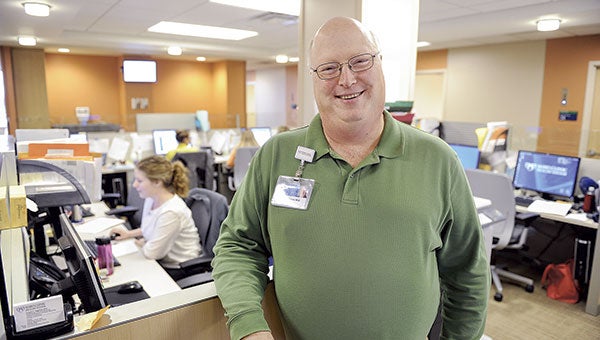Mayo seeks to answer what care is best for each situation
Published 9:53 am Wednesday, May 13, 2015

Dr. Greg Angstman poses in a work area for his pilot team for the team care approach at Mayo Clinic Health System in Austin in 2013. The clinic was in the early stages of implementing an approach that would have a team of people helping a patient. Herald file photo
Evolutions in health care services and strategy have given patients a variety of options when it comes to receiving care from a provider at Mayo Clinic Health System in Austin.
However, sometimes understanding what type of care is best for a particular patient need is challenging. Should you go to Urgent Care? Can you address your needs over the phone? Is it best to wait to schedule an appointment with your care team?
That’s why the clinic is looking to help patients better understand their options.
“Getting the right care at the right place and time is important,” said Dr. Greg Angstman, a family medicine physician. “And, as health care providers, our goal is to help you understand how to do just that.”
So, what are patients’ care options and when is it appropriate to use them?
Emergency Department
The name says it all. If it’s an emergency, then you should come to the Emergency Department (ED). An emergency is when a condition arises that you deem severe, often times a life or death situation. Good examples are heart attack symptoms, stroke or a compound fracture — a bone that protrudes through the skin.
The ED is set up with the resources needed to effectively diagnose and treat life or death situations. Choose the ED if you have immediate worries about your health.
Urgent Care
If, from a medical standpoint you feel like your ailment can’t wait tomorrow, Urgent Care is the place to go. Specializing in the treatment of minor illness and injury, Urgent Care providers commonly diagnose and treat colds and cough, ear infections, minor burns and cuts, rashes and other non-life threatening conditions.
“Think of Urgent Care as the middle-ground between your primary care team and the ED. But don’t use Urgent Care simply for convenience — make sure your need is urgent in nature,” Angstman said.
Nurse Line
“With Nurse Line, you can get medical advice 24/7. Many common conditions can be treated over the phone, saving you an office visit,” Angstman said. Nurse Line can assist with virtually all acute health care needs. Common conditions include ear aches, coughs, colds, urinary tract infections, pediatric conjunctivitis (pink eye) and yeast infections. Some situations will still require patients to set up a face-to-face appointment with a provider or seek immediate care.
Mayo urges patients to consider these different options and the guidelines the next time they seek health care.
For questions, contact your primary care team or call the Nurse Line, a free service, at 1-888-609-4065 to speak with an expert nurse from Mayo Clinic Health System. For more information, visit www.mayoclinichealthsystem.org.




